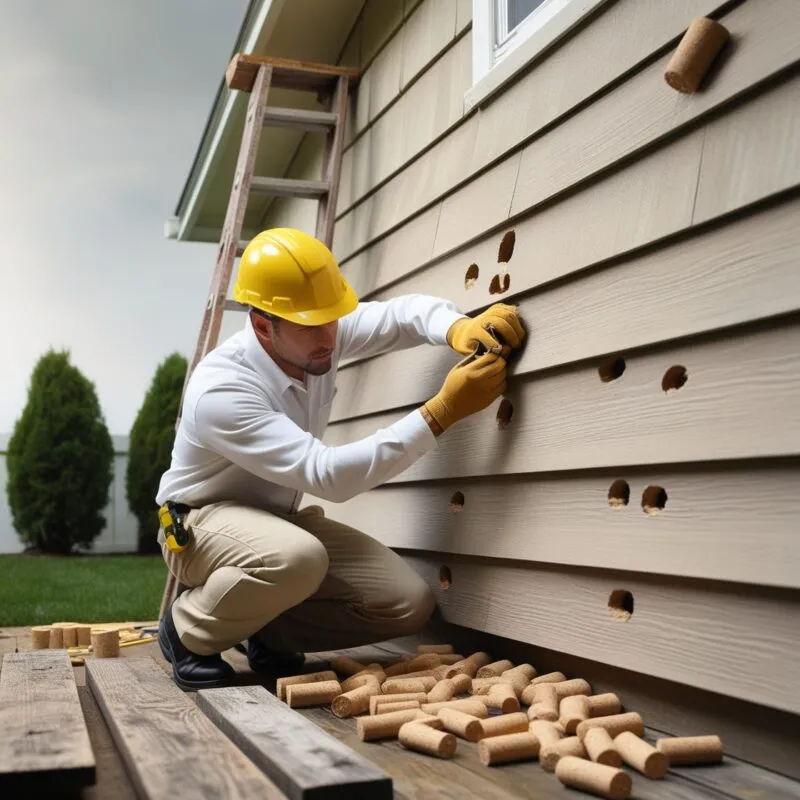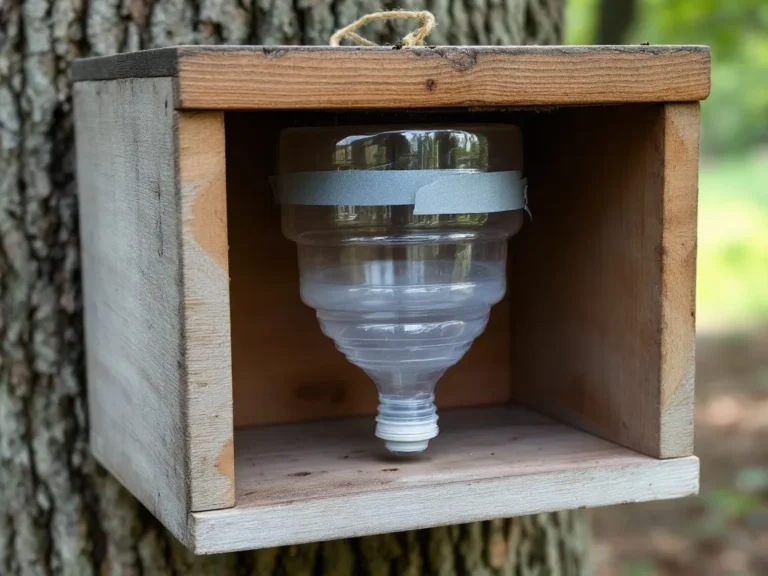Carpenter bees are a common sight buzzing around in the warmer months, but the perfectly round holes they drill into wooden surfaces can be a real headache for homeowners. If you’ve noticed these bees making themselves at home in your deck, siding, or any other wooden structure, you might be wondering if it’s best to plug up those holes and how to do it right. Before you grab the caulk, it’s important to understand a bit more about these bees, why they drill, and what your options are. In this guide, we’ll walk you through when it makes sense to plug carpenter bee holes, explore some alternative ways to manage them, and share tips on how to protect your wood from future infestations. Let’s dive in and tackle those pesky bee problems together!
Understanding Carpenter Bees
Carpenter bees look a lot like bumblebees, but they act quite differently. While bumblebees are social and live in colonies, carpenter bees prefer a more solitary lifestyle. Instead of building hives, they tunnel into wood to make nests for their larvae. If you spot perfectly round, smooth holes in your wooden structures, along with some sawdust or even a yellowish stain nearby, that’s a telltale sign you’ve got carpenter bees around. They might be fascinating to watch, but those tiny tunnels can cause big problems for your wood!
Why Do Carpenter Bees Drill Holes?
Carpenter bees excavate tunnels in wood as a safe space to lay their eggs. These nests can extend several inches into the wood and, if left untreated, can cause structural damage over time. Repeated nesting can weaken wooden beams, decks, and furniture, making early intervention important.
Should You Plug Carpenter Bee Holes?
Pros of Plugging Carpenter Bee Holes
- Prevents Further Damage: By sealing the holes, you stop new bees from reusing the tunnels, which prevents the expansion of the nest.
- Improves Aesthetics: Plugging the holes and repainting the wood restores its appearance and integrity.
- Reduces Reinfestation: Sealing existing holes reduces the chance of other insects using the nests.
Cons of Plugging Carpenter Bee Holes
- Traps Bees Inside: If bees are still inside when you plug the holes, they can cause further damage trying to escape or die inside, creating other issues.
- New Holes May Appear: If the initial problem isn’t fully addressed, carpenter bees may simply create new holes nearby.
When to Plug Carpenter Bee Holes
The best time to plug carpenter bee holes is in late summer or early fall, after the bees have left the nest but before they return to hibernate. Always ensure the holes are treated with insecticide before sealing them to eliminate any remaining larvae or bees.
How to Plug Carpenter Bee Holes: A Step-by-Step Guide
- Treat the Holes with Insecticide: Before sealing, spray a residual insecticide inside each hole. This step is crucial to kill any larvae or bees still inside.
- Wait for 24-48 Hours: Allow the insecticide time to work before plugging the holes.
- Fill the Holes: Use a wooden dowel coated with wood glue, caulk, or exterior-grade wood filler to plug the hole. Ensure the filler is compact and fills the entire tunnel to prevent bees from reentering.
- Sand and Paint: After the filler has dried, sand the surface smooth and repaint the area. Painting or staining the wood not only improves the appearance but also deters future nesting, as bees prefer untreated wood.
Alternative Methods for Managing Carpenter Bees
1. Natural Repellents
Using natural deterrents like citrus oil, essential oils (such as eucalyptus, tea tree, or peppermint), or almond oil can help keep carpenter bees at bay. These oils are not toxic to bees but make the wood less appealing for nesting.
2. Carpenter Bee Traps
Carpenter bee traps can be placed near affected areas to capture bees. These traps mimic the appearance of a nest and lure the bees inside, where they cannot escape.
3. Preventive Measures
- Paint and Seal Wood: Carpenter bees are attracted to bare, untreated wood. Regularly painting or sealing wooden surfaces can prevent bees from drilling.
- Replace Damaged Wood: Using treated wood, composite materials, or metal for repairs can reduce the likelihood of future infestations.
- Regular Inspections: Check for new holes or signs of activity, especially in spring when bees are most active.
Preventing Future Carpenter Bee Infestations
Regular Maintenance and Inspections
Routine checks and maintenance are key to keeping carpenter bees away. Inspect wooden structures in early spring and late summer, looking for new holes or signs of activity.
Carpenter Bee-Resistant Materials
Consider using pressure-treated wood, composite decking, or vinyl for outdoor projects. These materials are less attractive to carpenter bees and provide long-term protection.
Resources
- National Pest Management Association: Tips and guides on dealing with various household pests, including carpenter bees.
- University Extension Services: Educational resources on pest management and environmentally friendly solutions.
- Books: “The Bee-Friendly Garden” offers insights into managing bees while protecting your home.
FAQs
Q: What is the best time of year to plug carpenter bee holes?
A: The best time to plug carpenter bee holes is in late summer or early fall after the bees have left the nest.
Q: Can I use spray foam to plug carpenter bee holes?
A: While spray foam can seal holes, it’s not recommended as it doesn’t deter bees from chewing through it again. A wooden dowel or wood filler is more effective.
Q: How can I tell if a carpenter bee hole is active?
A: Active holes often have fresh sawdust around them, visible bee activity, or a yellow stain from bee excrement.
Q: Are carpenter bee traps effective?
A: Carpenter bee traps can be effective for capturing adult bees but should be used alongside preventive measures to manage infestations fully.
Q: How much damage can carpenter bees cause?
A: While initial damage may seem minor, repeated nesting can weaken structures over time, requiring costly repairs if not addressed.
Conclusion
Plugging carpenter bee holes is a crucial step in managing these wood-boring insects and protecting your home from potential damage. By treating, plugging, and preventing future infestations, you can maintain the integrity and appearance of your wooden structures. Remember, a proactive approach with regular inspections and maintenance is the best defense against carpenter bee damage.





